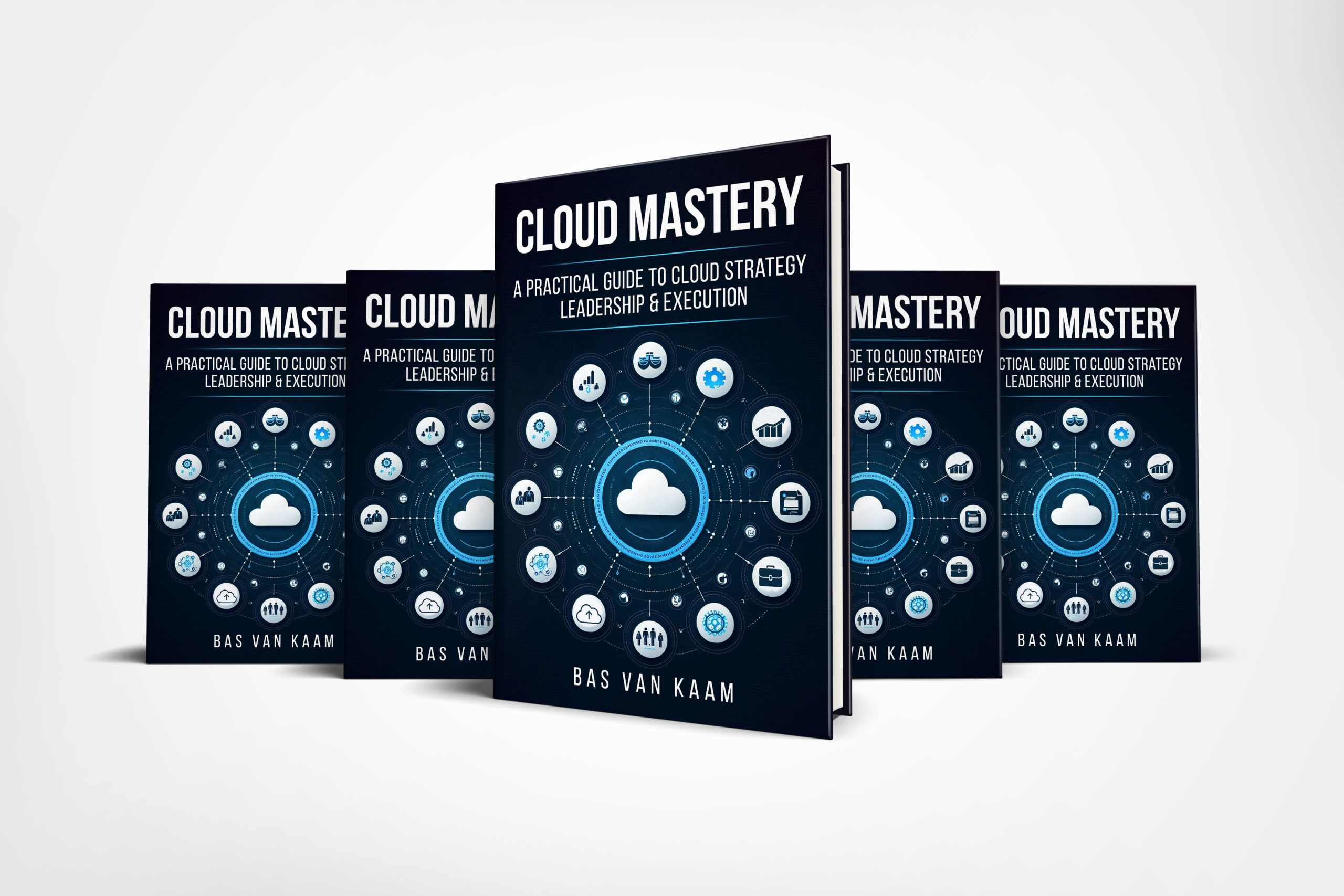Have you ever used the Citrix project Accelerator? No? You should! At least have a look and see what you make of it, so did I. Currently there are over 12.500 projects (active and closed) known by Project Accelerator, I’ll get to the how and why in a minute. According to the release notes it has been online and available in beta since December 2012, but I assume they’re only referring to the (upgraded) XenDesktop 7.1 version, right?! For those of you unknown with the concept, I’ll try and explain what it’s about and how it’s done.
The concept
The idea behind Project Accelerator is to ‘guide’ you, the admin, to a successful XenDesktop, XenApp or XenClient deployment, ranging from a few dozen to multiple thousands (there’s no maximum) of users and or desktops, which we all know isn’t an easy task.
 You’ll start from scratch and take it one step at the time following Citrix’s best practices and recommendations including but not limited to, hardware sizing, storage, networking, user groups, applications and some other architecture related building blocks. It’s like having one of Citrix’s lead architects right at your desk, all the time. At least, that’s the idea. Oh, and did I mention that it’s free ?! After a general assessment, using the XenDesktop Assessment Wizard, where you define your organisation, users, applications and so on, the software will determine some of your, if not all, architectural needs as mentioned above, this will also include a deployment plan and architectural layout.
You’ll start from scratch and take it one step at the time following Citrix’s best practices and recommendations including but not limited to, hardware sizing, storage, networking, user groups, applications and some other architecture related building blocks. It’s like having one of Citrix’s lead architects right at your desk, all the time. At least, that’s the idea. Oh, and did I mention that it’s free ?! After a general assessment, using the XenDesktop Assessment Wizard, where you define your organisation, users, applications and so on, the software will determine some of your, if not all, architectural needs as mentioned above, this will also include a deployment plan and architectural layout.
Still in beta you say?
 Project Accelerator is still in beta and probably will be for a while, because of this you’ll miss out on some its features as well. For example, Deploy, which complement the Citrix Consulting Methodology, will be added in a future release, no exact date(s) are given at this moment. I guess we’ll just have to wait and see, although I wonder what they’ll bring to the table in addition to the current Design feature (which is live already), deployment plan and architectural layout as mentioned above. Check out this page (scroll down) for an overview on all supported features per product. Although XenDesktop 7.1 is only partly supported (I estimate it’s somewhere near 75%) It’s very usable already.
Project Accelerator is still in beta and probably will be for a while, because of this you’ll miss out on some its features as well. For example, Deploy, which complement the Citrix Consulting Methodology, will be added in a future release, no exact date(s) are given at this moment. I guess we’ll just have to wait and see, although I wonder what they’ll bring to the table in addition to the current Design feature (which is live already), deployment plan and architectural layout as mentioned above. Check out this page (scroll down) for an overview on all supported features per product. Although XenDesktop 7.1 is only partly supported (I estimate it’s somewhere near 75%) It’s very usable already.
Limited to XD for now
![]() During the assessment phase, that’s where it all starts, you’ll have to select which version of XenDesktop you’d like to use, you can either go with version 5.6 or 7.1, hence the XenDesktop Assessment Wizard mentioned earlier. XenApp, although it was in there before, isn’t an option, at least not for the time being. This is mainly because as of XD 7, as we all know, both XenApp and XenDesktop were merged into a single product (or architecture) giving us the option to provision both VDI as well as HSD environments from a single platform, including XenClient which is part of XD (FlexCast) model as well. So who needs a separate XenApp wizard right?
During the assessment phase, that’s where it all starts, you’ll have to select which version of XenDesktop you’d like to use, you can either go with version 5.6 or 7.1, hence the XenDesktop Assessment Wizard mentioned earlier. XenApp, although it was in there before, isn’t an option, at least not for the time being. This is mainly because as of XD 7, as we all know, both XenApp and XenDesktop were merged into a single product (or architecture) giving us the option to provision both VDI as well as HSD environments from a single platform, including XenClient which is part of XD (FlexCast) model as well. So who needs a separate XenApp wizard right?
Existing projects
Due note that existing projects based on XenApp 6.5 are still there, however, because of the differences between IMA and ICA they weren’t automatically changed when they upgraded the Project Accelerator to support XenDesktop 7.1. Now that they’ve announced the release of XenApp and XenDesktop 7.5, again as a separate products, I’m sure that they’ll introduce a separate XenApp wizard, or something alike, not too long from now. Fortunately it’s (XenApp 7.5) based on same FMA architecture as XenDesktop, so hopefully this won’t impact further development too much.
Still some work to be done
Although it might seem far from complete, specifically when it comes to the XD 7.1 integration it will certainly provide you with a solid foundation to start from. However, the question you should probably ask yourself is, even if XenDesktop 7.1 is fully supported and all the output would be a 100% accurate etc… is this a tool I could work with? If yes, great, if not, why? What is it lacking? Is it the interface, doesn’t it provide enough or the right kind of information? What is it you’re looking for?
 Sizing storage, calculating IOPS, the amount of RAM, CPU’s and network throughput needed, providing external access, picking the right delivery models, software to use and so on, isn’t an easy task, not for most of us anyway. Never mind how it all blends together architectural wise, what I mean to say is, every tool that could assist us with the above might prove to be a valuable asset and is more than welcome, if done properly of course. I’m not saying that the Project Accelerator will automate everything for you and take away your ‘worries’ completely but it can definitely help in making life a little easier. The screenshot shows an overview of the sizing and deployment Plan as part of the design phase which I’ll discuss in a minute.
Sizing storage, calculating IOPS, the amount of RAM, CPU’s and network throughput needed, providing external access, picking the right delivery models, software to use and so on, isn’t an easy task, not for most of us anyway. Never mind how it all blends together architectural wise, what I mean to say is, every tool that could assist us with the above might prove to be a valuable asset and is more than welcome, if done properly of course. I’m not saying that the Project Accelerator will automate everything for you and take away your ‘worries’ completely but it can definitely help in making life a little easier. The screenshot shows an overview of the sizing and deployment Plan as part of the design phase which I’ll discuss in a minute.
Feel free to contribute
I’m aware that there might better tools out there, so please feel free to contribute. I also know that a lot of companies have, or develop, their own sizing mechanisms (so do we), if possible, I would like to hear some more about those as well. What makes other tools, if any, (developed in-house or otherwise) better than project Accelerator? I guess that, In the end, it all comes down to testing, testing and test a little more, right?
Citrix advices you to consult with one of your Citrix representatives or partner(s) with regards to exact sizing numbers etc. at least till it’s (Project Accelerator) finished. Which, for me, makes perfect sense and is something I would advice you to do anyway, no exceptions, unless you know exactly what you are doing, and even then, a second opinion never hurt anybody, unfortunately, the opposite is also true, it can save you a lot of trouble.
Things to come
It took them quite some time to get this far, and with their products constantly changing it’s if they’re constantly one step behind their own portfolio. But then again, with all that’s been going on lately priorities shifted and this one probably slipped of their radar a bit, and I don’t blame them. Let’s just hope that the announced 7.5 product releases won’t slow them down any further. Let’s give them another few months shall we?!
Let’s have a look
At first I was planning on including a whole bunch of screenshots showing you the entire process from start to finish, in fact, I already had them lined out and good to go. But then I realised how straightforward this tool actually is and that you should just go and have a look for yourself. Log in with your My Citrix credentials create a new project and take it from there. To give you an idea, here’s a high level overview.
Initial assessment
 During the ‘Assess’ phase you’ll first need to define your organisation, fill in its name, describe your industry, how many users will be using this solution and so on and so forth. During the definition of your organisation you also need to prioritize how important BYOD is for example, overall security, ease of management, cost reduction and a few more. And finally they’d like to know about the existing skillets within your organisation, with other words, depending on our recommendations, you might need some help and we’re happy to be of service.
During the ‘Assess’ phase you’ll first need to define your organisation, fill in its name, describe your industry, how many users will be using this solution and so on and so forth. During the definition of your organisation you also need to prioritize how important BYOD is for example, overall security, ease of management, cost reduction and a few more. And finally they’d like to know about the existing skillets within your organisation, with other words, depending on our recommendations, you might need some help and we’re happy to be of service.
Define your project
Once you’re ready and hit ‘save and continue’ you’ll end up on the ‘Define Project’ page, which is still part of the Assess phase by the way. Here you name your project, choose which version of XenDesktop you’d like to use, say something about your currently owned licenses and if you’ll be getting any help from the outside. From there, during the next steps, you will further define your user groups, applications and finally link those two together (see next paragraph) Of course there’s a bit more to it, per application you’ll have to define if it’s technically challenging, resource intensive and a so on and although this may sound like lot, trust me, it’s all very intuitive and straightforward.
Users and applications
The same applies when defining your user groups (as mentioned above) you need to name them, assign them to a datacenter, give in the amount of users, choose a form of personalisation, security requirements etc… Again, this all sounds more complex than it really is. During one of the final ‘Assess’ phases, where you link your users to your applications, you simply select a group of users and link them to one or multiple applications as you feel fit, as you can see below. Remember, there’s no limit to the amount of users and or applications that you can define, or applications per user group for that matter.
The design phase
 Once your passed the ‘Assess’ phase, which is a big and important one, Project Accelerator will use your input to provide you with a sizing and deployment plan and a recommended architecture overview (project documents) all based on Citrix’s best practices as mentioned earlier. These recommendations will include several FlexCast models, including the number of vCPU’s, amounts of RAM and steady state IOPS per desktop and user. You’ll also find an overview on personalisation with regards to user profiles and policies, how to install your applications, image size, recommended operating systems to use and desktop policies.
Once your passed the ‘Assess’ phase, which is a big and important one, Project Accelerator will use your input to provide you with a sizing and deployment plan and a recommended architecture overview (project documents) all based on Citrix’s best practices as mentioned earlier. These recommendations will include several FlexCast models, including the number of vCPU’s, amounts of RAM and steady state IOPS per desktop and user. You’ll also find an overview on personalisation with regards to user profiles and policies, how to install your applications, image size, recommended operating systems to use and desktop policies.
Architectural overview
All this information is displayed on a per user group and per application basis. Remember, it’s recommended and not mandatory, so you will able to change anything you like, no exceptions. Below is an example of a recommended architecture, I know, it’s blurry, click to enlarge and sharpen. Due note that it doesn’t displays the whole picture.
Data center
 As part of your datacenter set-up they’ll also recommend whether to use PVS or MCS, depending on our situation and how to configure your storage, NFS, iSCSI, FC or CIFS. With regards to the different FlexCast models, if there are multiple, Project Accelerator will also advise you on the Hypervisor to use and the hardware that goes with it. For example, you may need Hyper-V hosts with 16 CPU cores per physical host, 256 GB of RAM and FC/iSCSI connected storage. It does this for every FlexCast model involved including those of the Delivery Controllers. All this will be displayed in clear text as well as a detailed breakdown of capacity estimates, FlexCast fit, and user group prioritisation in the form of the earlier mentioned sizing and deployment plan and architectural documents. The screenshot shown is still part of the Design phase, there are 34 Design decisions in total, see the comments section as well for some more information.
As part of your datacenter set-up they’ll also recommend whether to use PVS or MCS, depending on our situation and how to configure your storage, NFS, iSCSI, FC or CIFS. With regards to the different FlexCast models, if there are multiple, Project Accelerator will also advise you on the Hypervisor to use and the hardware that goes with it. For example, you may need Hyper-V hosts with 16 CPU cores per physical host, 256 GB of RAM and FC/iSCSI connected storage. It does this for every FlexCast model involved including those of the Delivery Controllers. All this will be displayed in clear text as well as a detailed breakdown of capacity estimates, FlexCast fit, and user group prioritisation in the form of the earlier mentioned sizing and deployment plan and architectural documents. The screenshot shown is still part of the Design phase, there are 34 Design decisions in total, see the comments section as well for some more information.
Conclusion
Most the work is done during the ‘Assess’ phase, followed by Citrix’s recommendations which you than can either directly follow or adjust as and when needed. Although it still lacks 100% accuracy when it comes to XD 7.1 it will defiantly give you a good idea on what to expect and where to start. You’ll probably need to give the IOPS part another look and you also have to make up your mind when it comes to potential hardware investments etc. especially if you’re going GreenField, so to speak. But at least you’ll have some numbers to work with. Let me know what you think.











4 responses to “Planning your next XenDesktop deployment? Have a look at Citrix Project Accelerator”
Bas, thanks for the well-written writeup on Project Accelerator. You are very correct that although we provide sound advice derived from the experts who work in Citrix Consulting, it is always good to get a second opinion. I have some additional input to suggest:
1) We only recommend using Project Accelerator for projects with 5,000 or less users. The logic we use does not accurately size or suggest an architecture for projects above that size. It is possible to create that logic but the work required is significant. So we’ve recently added a warning to that affect on the Organization page. I recommend people considering projects of that size work with Citrix Consulting or leverage the advice in the XenDesktop Handbook, http://blogs.citrix.com/2013/10/10/new-xendesktop-7-handbook-published/
2) Our logic does include XenApp. If you select XenDesktop 7.1, you can get a Hosted Shared desktop running on a Server-Based OS workload. We also allow for that virtual desktop to have on-demand apps served from a separate XenApp server. However, we do not yet support just On-Demand Apps without a desktop. That is coming in our next release.
3) We are still in Beta as we have not yet released Deploy. However Design is out, your last screenshot shows an example of the 34 Design decisions we’ve exposed.
4) We only recommend a single imaging solution per project (i.e. MCS or PVS, not both)
I would love to receive feedback on Project Accelerator. Let us know how we can make it better support your next project.
– Chris Pagel, Sr. Product Manager, Citrix Project Accelerator
Hi Chris,
Thanks for your reply, I really appreciate it. I already made some small changes with regards to PVS / MCS and the Design / Deploy features. I already knew about the Design feature of course since I wrote a whole chapter about it, my bad.
As far a feedback goes, I do have some more. I’ll try and contact you guys somewhere tomorrow morning (for me anyway).
Thanks again,
Regards,
Bas.
When adding a serious amount of applications (850) for three groups for a total of 9,000 users than I get the output error: “Your output did not render properly and you can not move beyond this point.” with 10 applications in place it renders the information perfect. Too bad!
Hi Henry,
Indeed that is unfortunate, as far as the amount of users goes, I can only quite Citrix on this, they state the following on the Project Accelerator page
“Project Accelerator deliverables are designed for projects with less than 5,000 users. Please contact Citrix Consulting or a Citrix Solution partner or read the XenDesktop Handbook for advice about how to design a project of this size”
I don’t think the same applies to the number of applications that can be entered / rendered, but perhaps it’s related. I’ll ask when I get the chance.
Thanks for your input!
Regards,
Bas.